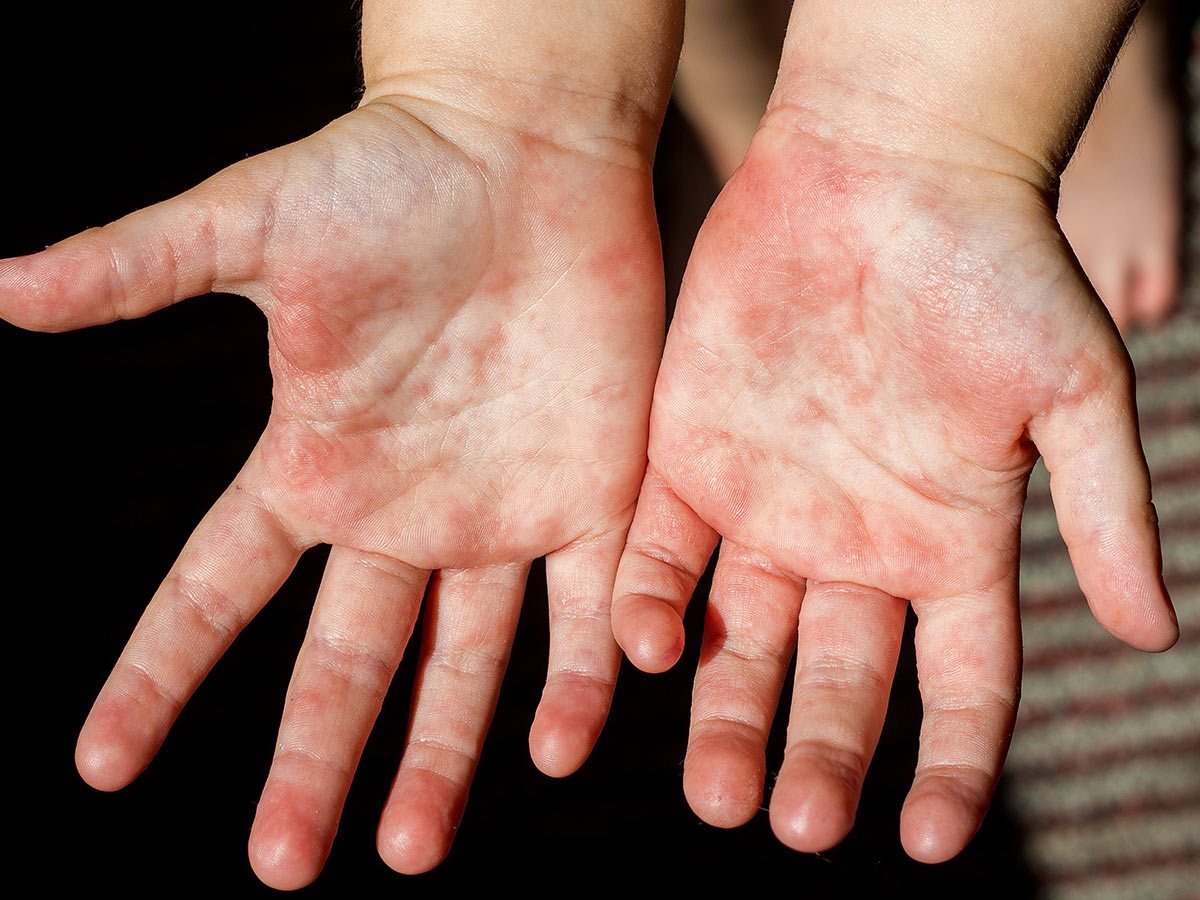Yellow Fever

The yellow fever virus is only found in subtropical areas in Africa and South America, and it is transmitted through the bites of infected mosquitoes. It is very rare for U.S. travelers to become infected with yellow fever because a certification of the yellow fever vaccine is required before traveling to affected areas.
Before traveling to regions that are yellow fever-endemic, you should be given the yellow fever vaccine at least 10 days before you leave for your trip.
Measles

Since measles is one of the deadliest childhood illnesses and highly contagious, vaccinations for his disease are very important. Luckily, there is an MMR (measles, mumps, and rubella) vaccine to protect against this dangerous disease.
Children are typically given their first dose of MMR at about one year old, and their second dose before starting kindergarten in order to receive complete protection.
Mumps

Also highly contagious, mumps is a disease caused by the mumps virus. Before the MMR vaccine, mumps was very common in infants, children, and young adults.
However, now that most people are vaccinated in the United States, it has now become an uncommon disease. Since the recent anti-vax campaign, mumps has actually become a serious issue around the country.
Rubella

Also referred to as the “German measles,” rubella is also a very contagious disease caused by a virus. While rubella only lasts a few days for children, it has the potential to cause serious birth defects if acquired by a pregnant woman.
Rubella is also protected against by the MMR vaccination in children. Thanks to the vaccination, the last major epidemic in the United States occurred during 1964 to 1965 with an estimated 12.5 million rubella cases in the U.S.
Diphtheria

Before the 1920s, diphtheria was a major cause of illness and death among children, with up to half of the people who contracted the disease dying from it. However, diphtheria rates dropped dramatically once the vaccination started being widely used – there were less than five cases reported in the U.S. in the last decade.
Four combination vaccines can be used to prevent diphtheria: DTaP, TDaP, DT, and TD. These vaccinations contain protection against diphtheria, tetanus, and some have protection for pertussis as well.
Smallpox

Smallpox hasn’t been an issue in the United States since 2015, which is pretty remarkable. That’s all thanks to the smallpox vaccine, but it’s a lot different than others. A forked needle with the virus is pricked into the skin. The skin will soon form red, itchy bumps in three to four days. In the first week, the bumps will become pus-filled blisters. Then, they will dry up, scab, and fall off.
Despite the risks, the vaccine is absolutely necessary. It’s effective in preventing the smallpox infection by up to 95%. The person is immune for three to five years, although subsequent vaccinations will last longer. By contrast, 52% of people who are unvaccinated die of smallpox.
Tetanus

Also called “lockjaw,” tetanus is a very serious disease that causes painful tightening of the muscles all over the body and leads to death in about one in ten cases. This disease does not spread from person to person like most others, though.
It's a bacterium found in soil, dust, and manure that can enter the body through breaks in the skin. To prevent contracting a case of tetanus, it is essential to stay up to date on your 10-year booster shots. Several vaccines can include tetanus prevention, namely TDaP, DTaP, DT, and TD.
Pertussis

More commonly known as whooping cough, pertussis is a highly contagious respiratory tract infection. Children can receive the DTaP vaccine, while adolescents and adults can get the TDaP vaccination; these protect against pertussis, tetanus, and diphtheria.
The Center for Disease Control stresses that people of all ages need to be vaccinated for whooping cough from young children to adults. Even pregnant women can become vaccinated for it!
Bacterial meningitis

Bacterial meningitis is a very dangerous form of meningitis that can prove deadly in just a few days without treatment. It can cause a myriad of symptoms including nausea, vomiting, increased sensitivity to light, and confusion.
There are two kinds of vaccines that work to protect against most types of the disease: meningococcal polysaccharide vaccine (Monomune) and meningococcal conjugate vaccine (Menactra, Menveo, and MenHibrix).
Varicella

Most know it as the chickenpox, varicella is very contagious, uncomfortable, and potentially serious. After being exposed to the virus, either by contracting it, or receiving the vaccination, your body develops a life-long immunity to the disease.
After the chickenpox vaccine was developed in the United States in 1995, the number of people who get chickenpox each year has gone down dramatically. This is especially important as getting chickenpox as an adult could be deadly.
Shingles

The varicella-zoster virus, which is what causes the chickenpox, is the same virus that can cause shingles. The virus is especially painful and can cause sores all over the body. Since it's easily spread from person to person, many doctors encourage people to get vaccinated.
Anyone who has had chickenpox can develop shingles later in life. The shingles vaccination is called Zostavax, and doctors encourage adults who are 60 years and older to get the vaccine to reduce the risk of contracting shingles as they're at an increased risk.
The Flu

The flu may not seem like much, but the most recent strains are increasing in danger. Between 2017 and 2018, 80,000 people died of the flu. This is the highest number of people that have died from the regular flu.
Health professionals release a new vaccine every year, which could help prevent the illness, although it isn’t 100% foolproof. Despite the controversy, there's no denying that the flu vaccine can cut the risk of hospitalization (for flu and pneumonia) by 30% to 70%.
Polio

Polio is a crippling disease, but not everyone ends up paralyzed. Only about 0.5% of cases have muscle weakness that results in the inability to move. The most common symptoms include headache, neck stiffness, and pains in the arms and legs. There are two types of vaccines used throughout the world to combat polio, and both types induce immunity to the disease.
Thanks to immunization, America was declared polio-free in 1994, but that may not be true for long. The upcoming Health Secretary Robert F. Kennedy Jr.'s lawyer has filed a petition for the F.D.A. to revoke the approval of the polio vaccine. This could lead to a nationwide outbreak of the virus that causes paralysis and death.
Hepatitis A

Hepatitis A is a highly infectious disease of the liver. Many cases experience few or no symptoms, but those that do can experience nausea, vomiting, jaundice, fever, and abdominal pain.
The vaccine contains an inactivated hepatitis A virus or a live but weakened virus and protects in more than 95% of cases for longer than 25 years. Since vaccinations become more prominent, the United States has managed to decrease Hep A cases 90% since 1990.
Hepatitis B

Hepatitis B is a serious liver infection but is easily preventable by a vaccine. It spreads through unprotected relations or via blood products, like unclean needles. Symptoms include yellowish skin, tiredness, dark urine, and abdominal pain.
Haemophilus Influenzae Type B

Haemophilus Influenzae Type B (HIB) is a disease caused by the H. influenzae bacteria. It spreads through respiratory droplets, like if someone coughs and sneezes on another. It can cause a myriad of symptoms similar to the flu, although it’s a different type of bacteria.
The countries that receive the vaccine have decreased the prevalence of the disease by 90%. In the United States, four doses are recommended periodically until the child is 15 months old.
Rotavirus

Rotavirus, more commonly known as gastroenteritis, can be more harmful than people think. Diarrhea, vomiting, and fever can cause loss of body fluids, which is especially dangerous in babies and children.
Before the vaccination program in the United States, the rotavirus caused 60,000 hospitalizations and 37 deaths each year. With vaccination, the risk of hospitalization decreases substantially, which is important as every child will get some form of rotavirus at least once by the age of five.
Pneumococcal Disease

Pneumococcus is the most common cause of bloodstream infections, pneumonia, meningitis, and inner infections in children. Adults ages 65 and older are also at an increased risk for pneumococcal disease.
There are two types of vaccines. PCV13 is the most common vaccine and is given to everyone at risk of contracting the bacteria. PPSV23 is given to anyone at an increased risk, like children under 2 and adults over 65.
Tuberculosis

Tuberculosis used to be much more common, but cases have significantly decreased due to a vaccination program. TB usually affects the lungs, but it can also affect other parts of the body.
There’s only one vaccination as of 2011, the Bacillus Calmette-Guerin vaccine, but new vaccines are in development as this one is only given to those at an increased risk. Many people born outside of the United States have been BCG-vaccinated.
Malaria

Malaria is a mosquito-borne infectious disease that’s extremely common outside of the United States. The best prevention of the disease is bug repellants and mosquito nets. However, vaccines are being studied extensively.
There is one approved vaccine as of 2015 called RTS,S. It requires four injections and is currently being studied in Africa, where malaria is most rampant. Preliminary results showed that RTS,S reduced the number of cases among children by 50%.
 Author
Olivia Reynolds
Last Updated: June 17, 2025
Author
Olivia Reynolds
Last Updated: June 17, 2025